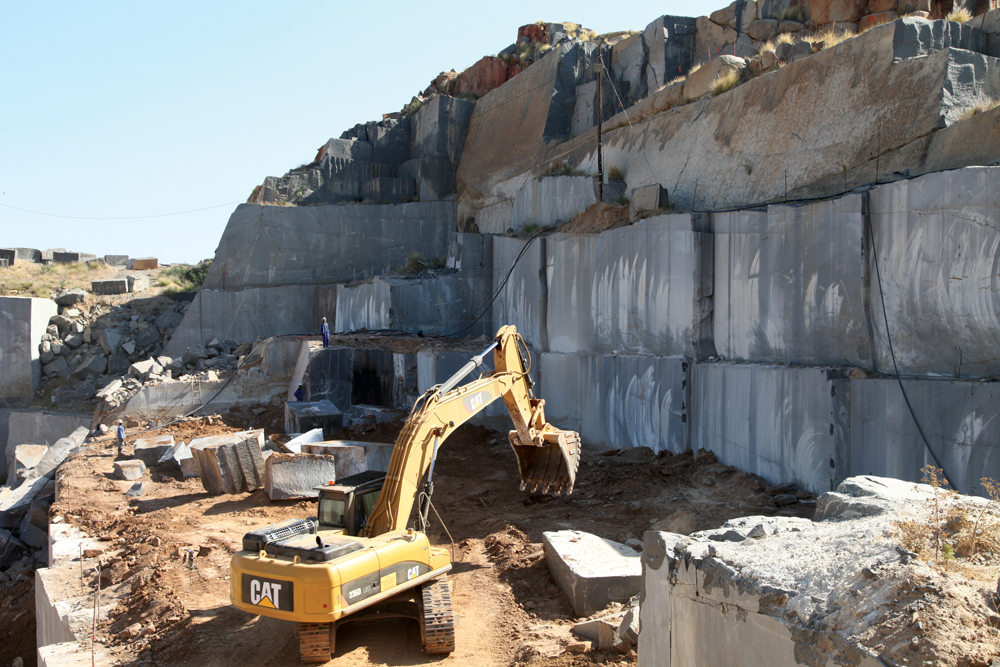Checking Out Granite Quarries in South Africa Market: From Quarry to Masterpiece
Checking Out Granite Quarries in South Africa Market: From Quarry to Masterpiece
Blog Article
Revealing the Mysteries of Granite Quarrying: Where Toughness and Elegance Meet
The world of granite quarrying is a world where the raw toughness of nature converges with human creativity to create structures that stand the examination of time with an air of style. From the depths of quarries to the careful sprucing up in workshops, the procedure of transforming granite into building wonders is an intricate dance of practice and advancement. As we peer right into the midsts of this old craft, we begin to uncover the concealed details that form the very essence of our developed setting.
The Origins of Granite Quarrying
In the annals of architectural history, the origins of granite quarrying are shrouded in a tapestry of ancient craftsmanship and geological marvels. Dating back to ancient Egypt and Mesopotamia, the extraction of granite from quarries marked the beginning of a journey that would eventually bring about the production of several of the globe's most legendary frameworks.
Granite quarrying's origins can be mapped to the experienced artisans who recognized the rock's longevity and visual allure. Via a mix of primitive devices and large decision, these early quarry workers unearthed granite blocks that would come to be the foundation of human beings.
As civilizations evolved, so did the strategies of quarrying granite. The Romans, renowned for their design expertise, established advanced methods for removing granite to create monuments, temples, and roads that stood the examination of time.
The heritage of these old quarrying practices continues to form modern-day design, with granite remaining an icon of toughness and beauty in building projects around the world. (granite quarries in south africa)
Tools of the Quarrying Profession
The advancement of granite quarrying techniques from ancient worlds to modern times highlights the vital role played by the devices of the quarrying profession in shaping the industry's practices. In old times, quarrying tools were fundamental, frequently including knives, hammers, and wedges made from materials like bronze or iron. These tools needed substantial manpower and time to remove granite obstructs from quarries.

Furthermore, the introduction of pneumatic tools and high-powered machinery has considerably decreased the physical labor called for in quarrying procedures, boosting employee security and efficiency. As the quarrying market continues to innovate, the tools of the profession continue to be at the center of driving progression and forming the future of granite extraction.
Removing Blocks of Granite
Utilizing accuracy machinery and progressed methods, the removal of granite obstructs from quarries has come to be an advanced process in the modern-day quarrying market. Controlled blasting strategies are then used to break apart the granite right into workable areas.

Polishing and Ending Up Techniques
To attain a flawless surface area on granite blocks, experienced craftsmens employ a series of thorough polishing and ending up techniques. After the first extraction and forming procedures, the granite blocks go through a comprehensive sprucing up stage to enhance their all-natural elegance and published here resilience.
Along with Home Page polishing, completing methods are put on more refine the granite's appearance. These methods might consist of flaming, developing, or brushing, each offering one-of-a-kind textures and finishes to fit various visual choices. Flaming, for example, includes revealing the granite surface area to high temperatures to produce a harsh, distinctive coating, ideal for outdoor applications where slip-resistance is necessary. Honing, on the other hand, offers a matte surface that is smooth to the touch, excellent for indoor countertops and flooring. By meticulously picking and using these brightening and ending up techniques, artisans can change raw granite obstructs right into exquisite pieces that showcase both strength and elegance.

Environmental Influence and Sustainability
With the expanding emphasis on ecological consciousness in the market, granite quarrying practices are significantly scrutinized for their influence on natural resources and long-term sustainability. Quarrying for granite can have considerable ecological ramifications. The removal process commonly involves the use of hefty machinery, dynamites, and huge amounts of water, resulting in environment destruction, soil disintegration, and water pollution. In addition, the transportation of granite from quarries to processing centers generates carbon emissions, additionally adding to environmental deterioration. granite quarries in south africa.
To reduce these effects and make sure Click This Link sustainability in granite quarrying, sector stakeholders are taking on numerous measures. Implementing innovative technologies to decrease energy usage and water usage, reclaiming quarried land for ecological remediation, and promoting responsible sourcing methods are some strategies being employed. Furthermore, certifications such as the Forest Stewardship Council (FSC) and the Management in Power and Environmental Design (LEED) help consumers identify eco pleasant granite items.
Conclusion
Finally, granite quarrying is a procedure that calls for specialized devices and strategies to extract blocks of granite and polish them to a high level of coating. While the ecological impact of quarrying can be considerable, initiatives are being made to enhance sustainability practices in the sector. Overall, granite quarrying is a fragile equilibrium in between taking advantage of the stamina and style of this all-natural rock while reducing its effect on the environment.
Report this page